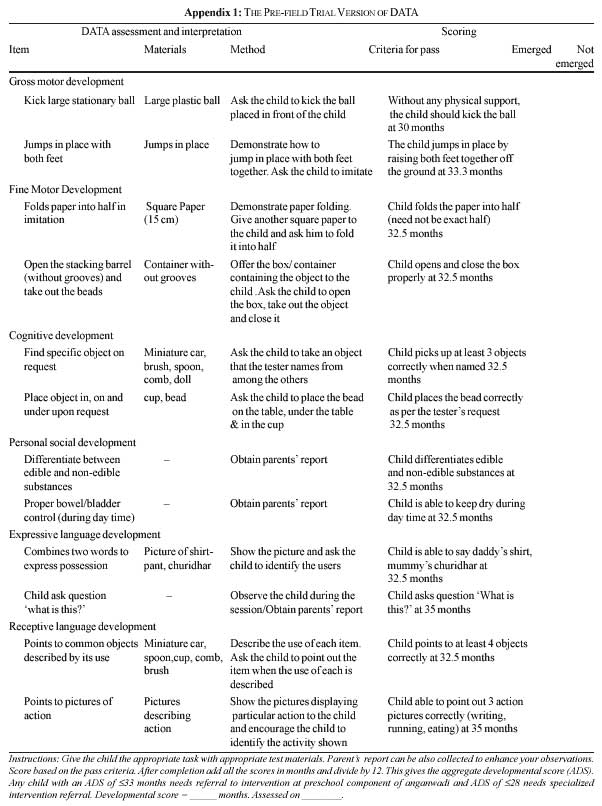
The developmental milestones from the Denver II Developmental Screening Test include cognitive and language/communication skills, fine and gross motor skills and social/emotional skills.Įvery year of a child’s life from birth to the age of five has a set of expectations for each category (Shahshahani, Vameghi, Azari, Sajedi, & Kazemnejad, 2010). It tests the child in various areas with developmental milestones. The ages between toddler and preschool is a sensitive time to assess the child for developmental problems such as mental retardation, which is detected at 2 years old if the child is not able to achieve any language milestones (Hazen, Abrams, Muriel, & Danforth, 2008).ĭevelopmental Milestones The Denver II Developmental Screening test was developed as a tool to detect developmental disorders in children early on. The girl is to undergo a Denver II Developmental Screening test to check if she is growing properly for her age. Recent studies support the use of a validated screening tool at regular, repeated intervals. and she is currently enrolled in a day-care program where she gets to play with other children of her age.
#Denver ii screening tool full
She was born full term through vaginal childbirth and was breastfed for only the first month before she was discontinued and started taking formula feedings. Her family has no history of diabetes or heart disease. The girl has no history of major illnesses or surgery, with no current health concerns. doi:10.5014/ajot.61.1.A case of Audrey B., 3 years and 1 month old, female, Caucasian. American Journal of Occupational Therapy, 61(1), 41-52. The purpose of the tests is to identify young children with developmental problems so that they can be referred for help. A revised version, Denver II, was released in 1992 to provide needed improvements. The Dynamic Occupational Therapy Cognitive Assessment for Children (DOTCA-Ch): A New Instrument for Assessing Learning Potential. The Denver Developmental Screening Test was introduced in 1967 to identify young children, up to age six, with developmental problems. Purchase: Dynamic Occupational Therapy Cognitive Assessment for ChildrenĭOTCA-CHTM Battery – Dynamic Occupational Therapy Category Assessment for Children. Measures: The Dynamic Occupational Therapy Cognitive Assessment for Children measures learning potential and thinking strategies.Īdministration time: Administration time for the Dynamic Occupational Therapy Cognitive Assessment for Children is 1.5 hours. Many screening tools can be completed by parents and scored by nonphysician personnel the physician interprets the screening results.
#Denver ii screening tool free
This score is based on a median or mean raw score of a particular age and it estimates the child’s approximate developmental age to determine whether the child is developing normally.Īfter reviewing the information on this page, use the free quiz at the bottom of the page to test your knowledge.Ī measure of reflexes and gross motor skills.Īuthors: Noomi Katz, PhD, OTR, Shula Parush, PhD, OT, & Ruthie Traub Bar-Ilan, MSc, OTĪge Range: The Dynamic Occupational Therapy Cognitive Assessment for Children is designed for children ages 6 to 12 years. Developmental screening is the administration of a brief standardized tool that aids the identification of children at risk of a developmental disorder.


Many pediatric assessment tools give an age equivalency score. Norm referenced tests measure performance against a normative sample in order to rank that client against the “norm.” A common example of norm referenced tests are tests such as the SAT or ACT or annual academic assessments such as the ITBS.

A common example of criterion referenced tests are typical classroom tests developed by teachers. Criterion referenced tests measure performance against a pass-fail criteria that determines whether or not a client can perform a particular skill. For developmental screening to be effective, it should begin early in a child’s life-be repeated throughout early childhood and use reliable, valid screening tools appropriate to the age, culture, and language of the child. Tools can be either criterion referenced or norm referenced. A bottom-up approach starts with the evaluation of the fundamental performance skills and client factors required for completion of the activities in question with the assumption that deficits will result in performance difficulties. A top-down approach starts with the evaluation of the occupations and takes a more global perspective of the client’s ability to participate in a given activity within a given context. About Press Copyright Contact us Creators Advertise Developers Terms Privacy Policy & Safety How YouTube works Test new features Press Copyright Contact us Creators. Assessment tools can take a top-down approach or a bottom-up approach.


 0 kommentar(er)
0 kommentar(er)
